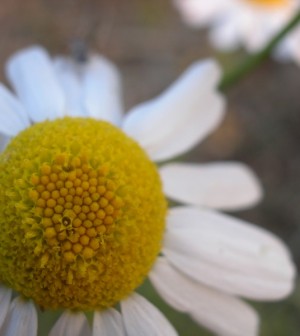- Navigating Your Midlife Crisis: Embracing New Possibilities
- City Raccoons Showing Signs of Domestication
- Mapping the Exposome: Science Broadens Focus to Environmental Disease Triggers
- One Week Less on Social Media Linked to Better Mental Health
- Your Brain Changes in Stages as You Age, Study Finds
- Some Suicide Victims Show No Typical Warning Signs, Study Finds
- ByHeart Formula Faces Lawsuits After Babies Sickened With Botulism
- Switch to Vegan Diet Could Cut Your Greenhouse Gas Emissions in Half
- Regular Bedtime Does Wonders for Blood Pressure
- Dining Alone Could Mean Worse Nutrition for Seniors
Smog Plus Pollen May Mean Even More Sneezing


Certain air pollutants may boost the potency of a birch tree pollen that plays a big role in seasonal allergies, researchers say.
In laboratory tests and computer simulations, researchers found that two pollutants — ozone and nitrogen dioxide — have a significant effect on the pollen, called Bet v 1.
Specifically, these pollutants appear to provoke chemical changes in the pollen that seem to raise its potency.
Levels of both ozone and nitrogen dioxide are also tied to climate change, according to a team including Ulrich Poschl, of the Max Planck Institute in Germany, and others.
This study finding, in combination with climate change, might help explain why airborne allergies are becoming more common, the researchers said.
The investigators were scheduled to present the findings Sunday at the annual meeting of the American Chemical Society in Denver. The research is still in its early stages, however, and experts note that studies presented at scientific meetings are typically considered preliminary until published in a peer-reviewed journal.
Still, “scientists have long suspected that air pollution and climate change are involved in the increasing prevalence of allergies worldwide,” Poschl said in a meeting news release. “Understanding the underlying chemical processes behind this phenomenon has proven elusive,” he added.
“Our research is just a starting point, but it does begin to suggest how chemical modifications in allergenic proteins occur,” potentially affecting people’s allergic response, Poschl said.
The investigators plan further research to determine if and how other pollens are affected by air pollutants.
About 50 million people in the United States have nasal allergies and the number is increasing, according to the American College of Allergy, Asthma and Immunology.
More information
The U.S. National Library of Medicine has more about pollen allergy.
Source: HealthDay
Copyright © 2025 HealthDay. All rights reserved.










